Region advances LNG projects with pace
30 August 2024

Global liquefied natural gas (LNG) liquefaction capacity is expected to more than double by 2028, potentially increasing from 473 million tonnes a year (t/y) in 2023 to 968 million t/y in 2028 through new build and expansion projects, according to a recent report by GlobalData.
North America dominates globally among the regions, in terms of new build and expansion liquefaction capacity growth, contributing around 54% of the total global capacity additions or 268 million t/y by 2028, GlobalData says in the report.
The Middle East comes in at second position, followed by the Former Soviet Union, with capacity additions of 78 million t/y and 71 million t/y, respectively.
Since the start of this decade, there has been a sharp increase in investments in the Middle East and North Africa (Mena), and particularly in the Gulf region, in projects to expand LNG production. Capital expenditure close to $45bn has been made by Mena hydrocarbon producers in the past 10 years on various LNG projects, mainly for output capacity building, MEED Projects data shows. Almost three-fourths of that spending took place in the past four years, and predominantly in the GCC.
A desire to cater to the steady growth expected in global LNG demand and dominate the global supply market is fuelling the wave of investments into large-scale production capacity expansions and terminal construction by Gulf players.
Qatar guns for top spot
Qatar has been jostling with the US and Australia for the status of being the largest LNG provider to the world for many years now. The three countries have all clinched the top spot, only to be unseated by another the very next month.
However, when its mammoth North Field LNG expansion programme begins to come online later this decade, Qatar will be able to consolidate its position as the world’s largest producer and exporter of LNG in the long term.
State enterprise QatarEnergy is understood to have spent almost $30bn on the two phases of the North Field LNG expansion programme, North Field East and North Field South, which will increase its LNG production capacity from 77.5 million tonnes a year (t/y) to 126 million t/y by 2028. Engineering, procurement and construction (EPC) works on the two projects are making steady progress.
QatarEnergy awarded the main EPC contracts in 2021 for the North Field East project, which is projected to increase LNG output to 110 million t/y by 2025. The main $13bn EPC package, which covers the engineering, procurement, construction and installation of four LNG trains with capacities of 8 million t/y, was awarded to a consortium of Japan’s Chiyoda Corporation and France’s Technip Energies in February 2021.
QatarEnergy awarded the $10bn main EPC contract for the North Field South LNG project, covering two large LNG processing trains, to a consortium of Technip Energies and Lebanon-based Consolidated Contractors Company (CCC) in May last year.
When fully commissioned, the first two phases of the North Field LNG expansion programme will contribute a total supply capacity of 48 million t/y to the global LNG market.
Qatar is, however, not stopping at that. QatarEnergy, in February, announced a third phase of its North Field LNG expansion programme. To be called North Field West, the project will further increase QatarEnergy’s LNG production capacity to 142 million t/y when it is commissioned by 2030.
The North Field West project will have an LNG production capacity of 16 million t/y, which is expected to be achieved through two 8 million t/y LNG processing trains, based on the two earlier phases of QatarEnergy’s LNG expansion programme. The new project derives its name from the western zone of Qatar’s North Field offshore gas reserve, from where it will draw feedstock for LNG production.
Oman moves up the ladder
Oman has been supplying LNG to customers, mainly in Asia, for many years now. Majority state-owned Oman LNG operates three gas liquefaction trains at its site in Qalhat, with a nameplate capacity of 10.4 million t/y. Due to debottlenecking, the company’s complex now has a production capacity of about 11.4 million t/y.
As recently as late July, the Omani government announced that Oman LNG will build a new train at its Qalhat LNG production complex in Sur, located in the sultanate’s South Al-Sharqiyah governorate. Oman LNG will perform the preliminary engineering study for the planned LNG train.
The LNG train will have an output capacity of 3.8 million t/y. When commissioned in 2029, it will increase Oman LNG’s total production capacity to 15.2 million t/y.
Aside from Oman LNG, France’s TotalEnergies has now committed itself to becoming a major LNG supplier in the sultanate. In partnership with state energy holding conglomerate OQ, TotalEnergies achieved final investment decision earlier this year for a major LNG bunkering and export terminal in Oman’s northern city of Sohar.
TotalEnergies leads a joint venture named Marsa LNG, which is the Sohar LNG terminal project developer. Marsa LNG was formed in December 2021 through an agreement between TotalEnergies and the sultanate’s state energy holding company OQ. The partners own 80% and 20% stakes, respectively.
Marsa LNG intends to develop an integrated facility consisting of upstream units that will draw natural gas feedstock from TotalEnergies’ hydrocarbon concessions in the sultanate, particularly from Blocks 10 and 11; an LNG bunkering terminal and storage units located in Sohar port; and a solar photovoltaic plant to power the LNG terminal.
The Marsa LNG terminal will have a single train with the capacity to process about 1 million t/y of natural gas into LNG. The bunkering terminal will mainly supply LNG as a marine fuel to vessels. Marsa LNG has picked France-based Technip Energies to perform EPC works on the estimated $1bn LNG terminal project.
Adnoc gives shape to ambitions
Abu Dhabi National Oil Company (Adnoc) has been a relatively smaller LNG producer in comparison to its GCC peers. Adnoc Group subsidiary, Adnoc Gas, operates three large gas processing trains on Das Island. At its Das Island terminal, Adnoc Gas has an LNG liquefaction and export capacity of about 6 million t/y. The first and second trains were commissioned in the 1970s and have a combined output capacity of 2.9 million t/y. The third train came into operation in the mid-1990s, with a capacity of 3.2 million t/y.
Adnoc Gas’ LNG production and export capability, however, will receive a major fillip when a new greenfield terminal it has committed to developing in Ruwais, Abu Dhabi, comes online before the end of this decade. The planned LNG export terminal in Ruwais will have the capacity to produce about 9.6 million t/y of LNG from two processing trains, each with a capacity of 4.8 million t/y.
Adnoc awarded the full EPC contract and achieved the final investment decision for the LNG terminal complex in June. A consortium of France’s Technip Energies, Japan-based JGC Corporation and Abu Dhabi-owned NMDC Energy was awarded the EPC contract, worth $5.5bn.
Jordan takes a step forward
Jordan imports more than 90% of its oil, gas and refined product needs and therefore has a strong economic case for developing projects to boost its domestic hydrocarbon infrastructure, particularly for gas.
The country recently took a key step forward when Aqaba Development Corporation awarded the main EPC contract in August for a project to develop the Sheikh Sabah Al-Ahmad Al-Jaber Al-Sabah LNG onshore regasification facility at the port of Aqaba.
The contract was won by a consortium of Singapore-based AG&P and South Korea’s Gas Entec, along with their local partner, Jordan’s Issa Haddadin.
In a statement, Gas Entec said that the facility will have the capacity to process 720 million cubic feet a day of natural gas.
“Jordan relies heavily on natural gas for its power and industrial needs, but faces challenges with supply reliability,” Gas Entec said.
“The new LNG terminal will provide Jordan with the flexibility to access LNG from various global suppliers, ensuring a stable and secure energy source.”
Exclusive from Meed
-
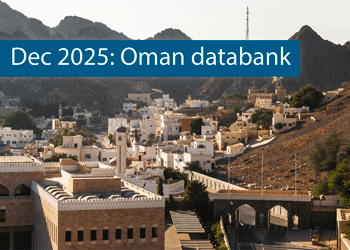 Oman’s growth forecast points upwards
Oman’s growth forecast points upwards24 December 2025
-
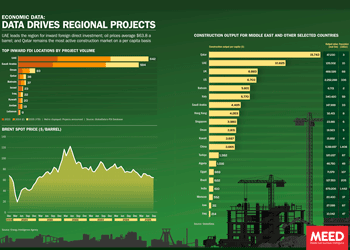 December 2025: Data drives regional projects
December 2025: Data drives regional projects23 December 2025
-
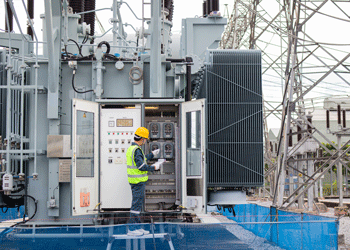 Local firm bids lowest for Kuwait substation deal
Local firm bids lowest for Kuwait substation deal22 December 2025
-
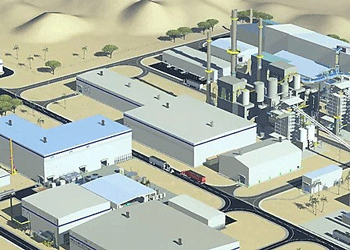 Saudi-Dutch JV awards ‘supercentre’ metals reclamation project
Saudi-Dutch JV awards ‘supercentre’ metals reclamation project22 December 2025
-
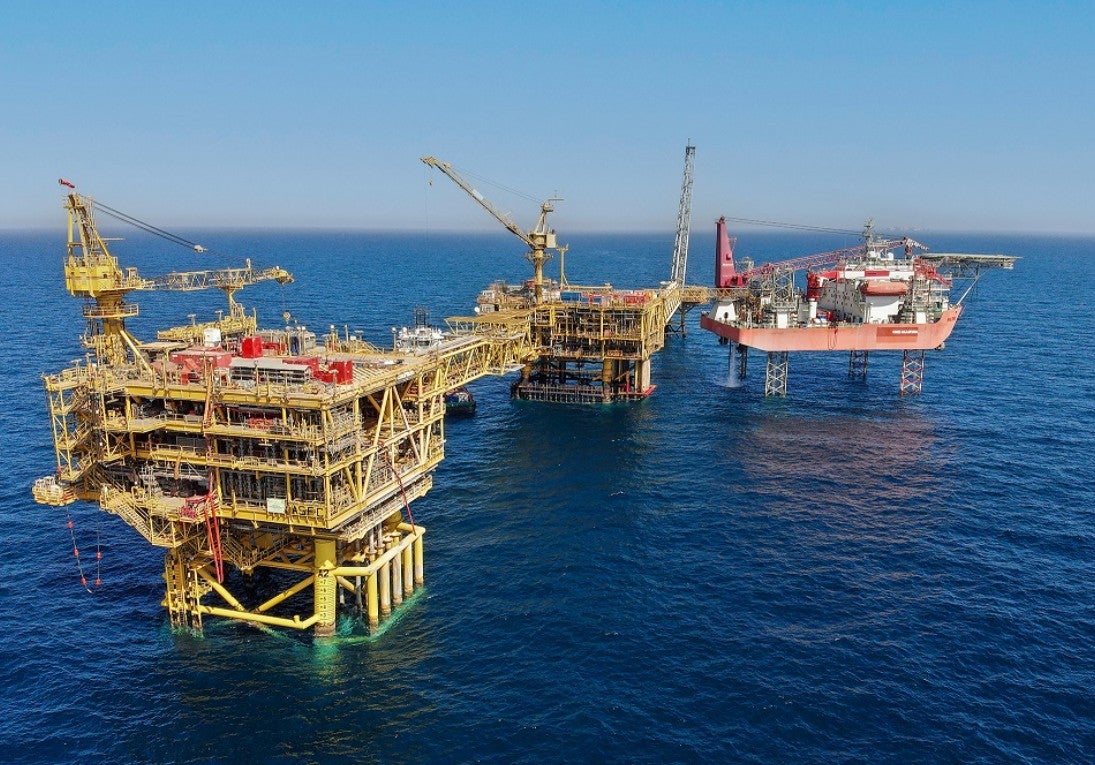 QatarEnergy LNG awards $4bn gas project package
QatarEnergy LNG awards $4bn gas project package22 December 2025
All of this is only 1% of what MEED.com has to offer
Subscribe now and unlock all the 153,671 articles on MEED.com
- All the latest news, data, and market intelligence across MENA at your fingerprints
- First-hand updates and inside information on projects, clients and competitors that matter to you
- 20 years' archive of information, data, and news for you to access at your convenience
- Strategize to succeed and minimise risks with timely analysis of current and future market trends

Related Articles
-
 Oman’s growth forecast points upwards
Oman’s growth forecast points upwards24 December 2025

MEED’s January 2026 report on Oman includes:
> COMMENT: Oman steadies growth with strategic restraint
> GVT & ECONOMY: Oman pursues diversification amid regional concerns
> BANKING: Oman banks feel impact of stronger economy
> OIL & GAS: LNG goals galvanise Oman’s oil and gas sector
> POWER & WATER: Oman prepares for a wave of IPP awards
> CONSTRUCTION: Momentum builds in construction sectorTo see previous issues of MEED Business Review, please click herehttps://image.digitalinsightresearch.in/uploads/NewsArticle/15306449/main.gif -
 December 2025: Data drives regional projects
December 2025: Data drives regional projects23 December 2025
Click here to download the PDF
Includes: Top inward FDI locations by project volume | Brent spot price | Construction output
MEED’s January 2026 report on Oman includes:
> COMMENT: Oman steadies growth with strategic restraint
> ECONOMY: Oman pursues diversification amid regional concerns
> BANKING: Oman banks feel impact of stronger economy
> OIL & GAS: LNG goals galvanise Oman’s oil and gas sector
> POWER & WATER: Oman prepares for a wave of IPP awards
> CONSTRUCTION: Momentum builds in construction sectorTo see previous issues of MEED Business Review, please click herehttps://image.digitalinsightresearch.in/uploads/NewsArticle/15306140/main.gif -
 Local firm bids lowest for Kuwait substation deal
Local firm bids lowest for Kuwait substation deal22 December 2025
The local Al-Ahleia Switchgear Company has submitted the lowest price of KD33.9m ($110.3m) for a contract to build a 400/132/11 kV substation at the South Surra township for Kuwait’s Public Authority for Housing Welfare (PAHW).
The bid was marginally lower than the two other offers of KD35.1m and KD35.5m submitted respectively by Saudi Arabia’s National Contracting Company (NCC) and India’s Larsen & Toubro.
PAHW is expected to take about three months to evaluate the prices before selecting the successful contractor.
The project is one of several transmission and distribution projects either out to bid or recently awarded by Kuwait’s main affordable housing client.
This year alone, it has awarded two contracts worth more than $100m for cable works at its 1Z, 2Z, 3Z and 4Z 400kV substations at Al-Istiqlal City, and two deals totalling just under $280m for the construction of seven 132/11kV substations in the same township.
Most recently, it has tendered two contracts to build seven 132/11kV main substations at its affordable housing project, west of Kuwait City. The bid deadline for the two deals covering the MS-01 through to MS-08 substations is 8 January.
https://image.digitalinsightresearch.in/uploads/NewsArticle/15305745/main.gif -
 Saudi-Dutch JV awards ‘supercentre’ metals reclamation project
Saudi-Dutch JV awards ‘supercentre’ metals reclamation project22 December 2025
The local Advanced Circular Materials Company (ACMC), a joint venture of the Netherlands-based Shell & AMG Recycling BV (SARBV) and local firm United Company for Industry (UCI), has awarded the engineering, procurement and construction (EPC) contract for the first phase of its $500m-plus metals reclamation complex in Jubail.
The contract, estimated to be worth in excess of $200m, was won by China TianChen Engineering Corporation (TCC), a subsidiary of China National Chemical Engineering Company (CNCEC), following the issue of the tender in July 2024.
Under the terms of the deal, TCC will process gasification ash generated at Saudi Aramco’s Jizan refining complex on the Red Sea coast to produce battery-grade vanadium oxide and vanadium electrolyte for vanadium redox flow batteries. AMG will provide the licensed technology required for the production process.
The works are the first of four planned phases at the catalyst and gasification ash recycling ‘Supercentre’, which is located at the PlasChem Park in Jubail Industrial City 2 alongside the Sadara integrated refining and petrochemical complex.
Phase 2 will expand the facility to process spent catalysts from heavy oil upgrading facilities to produce ferrovanadium for the steel industry and/or additional battery-grade vanadium oxide.
Phase 3 involves installing a manufacturing facility for residue-upgrading catalysts.
In the fourth phase, a vanadium electrolyte production plant will be developed.
The developers expect a total reduction of 3.6 million metric tonnes of carbon dioxide emissions a year when the four phases of the project are commissioned.
SARBV first announced its intention to build a metal reclamation and catalyst manufacturing facility in Saudi Arabia in November 2019. The kingdom’s Ministry of Investment, then known as the Saudi Arabian General Investment Authority (Sagia), supported the project.
In July 2022, SARBV and UCI signed the agreement to formalise their joint venture and build the proposed facility.
The project has received support from Saudi Aramco’s Namaat industrial investment programme. Aramco, at the time, also signed an agreement with the joint venture to offtake vanadium-bearing gasification ash from its Jizan refining complex.
Photo credit: SARBV
https://image.digitalinsightresearch.in/uploads/NewsArticle/15305326/main.gif -
 QatarEnergy LNG awards $4bn gas project package
QatarEnergy LNG awards $4bn gas project package22 December 2025
QatarEnergy LNG, a subsidiary of state-owned QatarEnergy, has awarded the main engineering, procurement, construction and installation (EPCI) contract for a major package for the second phase of its North Field Production Sustainability (NFPS) project.A consortium comprising the Italian contractor Saipem and state-owned China Offshore Oil Engineering Company (COOEC) has secured the EPCI contract for the COMP5 package. The contract value is $4bn, with Saipem declaring its share to be worth $3.1bn.
Milan-headquartered Saipem said the contract will run for about five years. The scope of work comprises engineering, procurement, fabrication and installation of two compression complexes, each including a compression platform, a living quarters platform, a flare platform supporting the gas combustion system, and the related interconnecting bridges. Each complex will have a total weight of about 68,000 tonnes.
Offshore installation operations will be carried out by Saipem’s De He construction vessel in 2029 and 2030.
MEED previously reported that the following contractors submitted bids for the NFPS phase two COMP5 package:
- Larsen & Toubro Energy Hydrocarbon (India)
- McDermott (US)
- Saipem/China Offshore Oil Engineering Company (Italy/China)
QatarEnergy LNG, formerly Qatargas, is said to have issued the tender for the NFPS phase two COMP5 package in the first quarter of the year.
Contractors submitted technical bids for the COMP5 package in late June, while commercial bids were submitted by 8 October, as per sources.
Based upon initial evaluation of bids by QatarEnergy LNG, L&TEH has emerged as the lowest bidder for the COMP5 package, followed by McDermott, with the consortium of Saipem and COOEC in third place, MEED reported in late October.
In the weeks following that, the project operator is said to have engaged all bidders for a final round of negotiations, during which the consortium of Saipem and COOEC is believed to have “clinched the deal”, according to sources.
The detailed scope of work on the COMP5 package covers the EPCI work on the following:
- Two gas compression platforms, each weighing 30,000-35,000 tonnes, plus jacket
- Two living quarters platforms, plus jacket
- Two gas flare platforms, plus jacket
- Brownfield modification work at two complexes
NFPS scheme
QatarEnergy’s North Field liquefied natural gas (LNG) expansion programme requires the state enterprise to pump large volumes of gas from the North Field offshore reserve to feed the three phases of the estimated $40bn-plus programme.
QatarEnergy has already invested billions of dollars in engineering, procurement and construction works on the two phases of the NFPS project, which aims to maintain steady gas feedstock for the North Field LNG expansion phases.
The second NFPS phase will mainly involve building gas compression facilities to sustain and gradually increase gas production from Qatar’s offshore North Field gas reserve over the long term.
Saipem has been the most successful contractor on the second NFPS phase, securing work worth a total of $8.5bn.
QatarEnergy LNG awarded Saipem a $4.5bn order in October 2022 to build and install gas compression facilities. The main scope of work on the package, which is known as EPCI 2, covers two large gas compression complexes that will comprise decks, jackets, topsides, interconnecting bridges, flare platforms, living quarters and interface modules.
The gas compression complexes – CP65 and CP75 – will weigh 62,000 tonnes and 63,000 tonnes, respectively, and will be the largest fixed steel jacket compression platforms ever built.
Following that, Saipem won combined packages COMP3A and COMP3B of the NFPS project’s second phase in September last year.
The scope of work on the combined packages encompasses the EPCI of a total of six platforms, approximately 100 kilometres (km) of corrosion resistance alloy rigid subsea pipelines of 28-inches and 24-inches diameter, 100km of subsea composite cables, 150km of fibre optic cables and several other subsea units.
Separately, QatarEnergy LNG awarded McDermott the contract for the NFPS second phase package known as EPCI 1, or COMP1, in July 2023. The scope of work on the estimated $1bn-plus contract is to install a subsea gas pipeline network at the North Field gas development.
In March this year, India’s Larsen & Toubro Energy Hydrocarbon (LTEH) won the main contract for the combined 4A and 4B package, which is the fourth package of the second phase of the NFPS project and is estimated to be valued at $4bn-$5bn.
The main scope of work on the package is the EPCI of two large gas compression systems that will be known as CP8S and CP4N, each weighing 25,000-35,000 tonnes. The contract scope also includes compression platforms, flare gas platforms and other associated structures.
LTHE sub-contracted detailed engineering and design works on the combined 4A and 4B package to French contractor Technip Energies.
NFPS first phase
Saipem is also executing the EPCI works on the entire first phase of the NFPS project, which consists of two main packages.
Through the first phase of the NFPS scheme, QatarEnergy LNG aims to increase the early gas field production capacity of the North Field offshore development to 110 million tonnes a year.
QatarEnergy LNG awarded Saipem the contract for the EPCI package in February 2021. The package is the larger of the two NFPS phase one packages and has a value of $1.7bn.
Saipem’s scope of work on the EPCI package encompasses building several offshore facilities for extracting and transporting natural gas, including platforms, supporting and connecting structures, subsea cables and anti-corrosion internally clad pipelines.
The scope of work also includes decommissioning a pipeline and other significant modifications to existing offshore facilities.
In addition, in April 2021, QatarEnergy LNG awarded Saipem two options for additional work within the EPCI package, worth about $350m.
QatarEnergy LNG awarded Saipem the second package of the NFPS phase one project, estimated to be worth $1bn, in March 2021.
Saipem’s scope of work on the package, which is known as EPCL, mainly covers installing three offshore export trunklines running almost 300km from their respective offshore platforms to the QatarEnergy LNG north and south plants located in Ras Laffan Industrial City.
Saipem performed the front-end engineering and design work on the main production package of the first phase of the NFPS as part of a $20m contract that it was awarded in January 2019. This provided a competitive advantage to the Italian contractor in its bid to win the package.
https://image.digitalinsightresearch.in/uploads/NewsArticle/15305330/main2239.jpg

 Global LNG demand set for steady growth
Global LNG demand set for steady growth